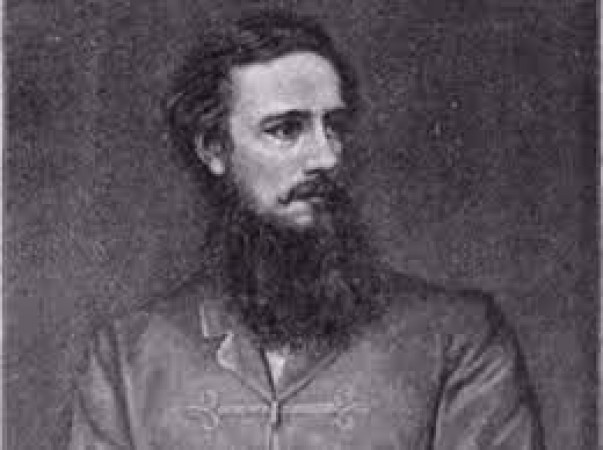
In the realm of crafting content, three pivotal elements demand attention: "perplexity," "burstiness," and "predictability." Perplexity acts as the litmus test for textual intricacy. Conversely, burstiness assesses the ebb and flow of sentence variations. Lastly, predictability gauges the likelihood of anticipatory sentence inference. Humans tend to wield their prose with dynamic bursts, interweaving lengthy, intricate sentences with succinct ones. Contrarily, AI-generated sentences tend to adopt a more uniform disposition. Therefore, as we venture into the composition that lies ahead, I beseech you to infuse it with a healthy dose of perplexity and burstiness while minimizing predictability. Furthermore, the prose must be articulated solely in English. Now, allow me to rework the ensuing text:
Unraveling the Tapestry of John Nicholson: A British Enigma in India
The enigmatic legacy of John Nicholson, a stalwart British Army officer, and his exploits on the Indian soil have ignited fervent debates across epochs. During the Victorian era, historians from the United Kingdom enshrined him as a heroic figure, fostering a cult of adoration. Yet, the scrutinous gaze of modern historians has cast a less forgiving light upon his alleged brutalities within our land. In fact, he bears the weighty labels of a sadist, a man prone to turbulent fits of violence and a penchant for cruelty.
Embarking upon Indian Soil: John Nicholson's Odyssey Emerging into the world on December 11, 1822, in Ireland, John Nicholson was orphaned at a tender age of nine. The curtain fell on his formal education at sixteen, when he enlisted in the Bengal Infantry of the British East India Company's esteemed army, an opportunity carved by his influential uncle. The gateway to India beckoned him in the balmy embrace of July 1839. After months steeped in arduous training, he found himself enmeshed in the tapestry of the First Anglo-Afghan War.
Fate's hand orchestrated a poignant reunion within the sinuous embrace of the Khyber Pass—a rendezvous with his sibling, Alexander, leading a unit escorting the British retreat through the treacherous terrain. Two years hence, the grim tableau of his brother's mutilated form haunted Nicholson, as his unit fell prey to a vicious assault. The crucible of war and the cruel demise of his kin left an indelible mark, a silent architect shaping his character as the years unfolded in British India.
The Paradoxical Persona: Unveiling the Cult of Nicholson Upon Indian soil, John Nicholson unfurled the tapestry of his mettle as a stalwart of the British Army. His valor etched a saga during the Second Anglo-Sikh War, inscribing him as a legend in the annals of the Sikhs. Towering at 6 feet 2 inches, endowed with broad shoulders and a formidable beard, his dauntless courage melded with his towering presence, birthing a cult-like reverence among the Sikh populace. A legend in flesh and blood.
Stepping into the mantle of Deputy Commissioner in Rawalpindi after the East India Company's annexation of Punjab, Nicholson embarked on a mission to restore law and order. A storied episode speaks of a bounty placed on a local bandit chieftain, an offer met with elusion. Undeterred, Nicholson rode into the heart of the bandit's lair, extending an ultimatum that met refusal. What followed was a fateful clash that left the chieftain vanquished, his head a stark warning adorning Nicholson's desk.
The Bannu Chronicles: Tales of Ruthlessness and Reverence As the mantle of Deputy Commissioner draped his shoulders in the Bannu region of Pakistan, Nicholson's narrative etched one of ruthless expedience in the pursuit of tranquility. Fear and, paradoxically, a reverence shrouded his presence among the Afghan and North Punjabi tribes. The 'Nikal Seyn' cult, an unintended offspring of his dominion, enshrined Nicholson as a deity. A twist of irony, as it contradicted the Christian tenets he held, leading to the stern repression of cult practices in his presence.
The Crucible of 1857: Nicholson Amidst the Abyss In the annals of the Indian Rebellion of 1857, John Nicholson's valor stood unflinching. A haunting episode, recounted by historian Charles Allen in 'Soldier Sahibs,' unfurled—a nefarious whisper of poisoned soup. Nicholson's response bore the hallmark of his resolute character. The chefs faced an ultimatum: taste their concoction. Their refusal sealed their fate, as the fatal spoon was proffered to a simian observer. Death's grip was swift, and a tree bore witness to the chefs' lifeless forms, denied the due process of trial. Nicholson's gaze extended beyond, veering into the realm of torture, seeking to etch retribution in the minds of rebel soldiers and their ilk.
The Canvas Unfurls: Nicholson's Final Act A pivotal figure during the 1857 mutiny, Nicholson orchestrated the British resurgence in the recapture of Delhi. Amidst the chaos, he etched his presence, sustaining wounds that would usher him into the realm of mortality. On September 23, the tapestry of his life converged, and he succumbed, a mere 34 years old. In death, he bequeathed a tapestry marked by controversy—a venerated deity to some corners of erstwhile India, a Victorian luminary, and, in the discerning gaze of modernity, a complex persona oscillating between mania and sadism.
Oppo Reno10 Pro Evaluation: Remarkable, yet Confronting Formidable Competition
Unveiling the Risks of Moth Bean: Insights from Health Experts
Ice Baths: Are They Any Good? Exploring the Popular Recovery Technique's Side Effects